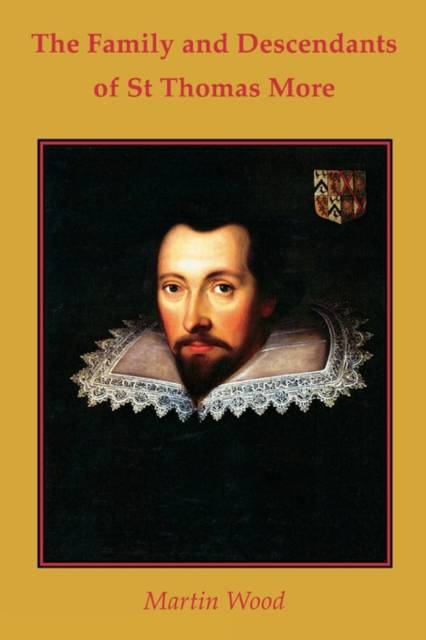
- Afhalen na 1 uur in een winkel met voorraad
- Gratis thuislevering in België vanaf € 30
- Ruim aanbod met 7 miljoen producten
- Afhalen na 1 uur in een winkel met voorraad
- Gratis thuislevering in België vanaf € 30
- Ruim aanbod met 7 miljoen producten
Zoeken
Omschrijving
This book, weaving together the history and genealogy of the More family and of the other families to which they allied themselves by marriage, provides an illuminating sequel to the various lives that have been written of St Thomas More. It tells the story of what happened to his family in the wake of his heroic witness against the tyranny of Henry VIII and how his descendants, inspired by his faith, were affected by their refusal to conform to the Church of England as, under successive monarchs, England was forcibly transformed from a Catholic into a Protestant country. The story begins with St Thomas More's parents and through his sister Elizabeth traces a line of literary figures that includes John Rastell the printer, playwright, dramatist and designer of pageants, John Heywood the Court musician, dramatist and playwright, and John Donne, the poet. After Thomas More's execution all the members of his immediate and extended family felt the force of Henry's fury. His step-mother and his widow, Dame Alice More, were both thrown out of their homes. His son, John, and son-in-law, William Daunce, both narrowly escaped the scaffold, but Giles Heron, another son-in-law, was executed at Tyburn on a trumped-up charge of treason. Others were called in for questioning and they, and their families, were carefully watched throughout their lives. Some sought refuge in Catholic Europe. Although knighted by Henry VIII, St Thomas More was not a member of the nobility, his male descendants could, however, take pride in the title 'Gentleman' or 'Esquire', and most of the families into which they married - among them the Scropes, the Gages of Firle, the Brookes of Madeley, and the Giffards - were non-conforming families of a similar standing. The book follows each generation down to the time when the Catholic Emancipation Act of 1829 finally brought relief from persecution. This is the story of a line of laymen and women, and of priests and nuns, all of whom had a deep faith and a firm resolve that makes them worthy of being listed among the 'Confessors of the Faith' - minor Confessors, maybe, but Confessors nonetheless. Martin Wood is, on his mother's side, a descendant of St Thomas More. He was educated at Ratcliffe College, Leicester, and obtained a degree in theology at the Pontifical Lateran University in Rome, later qualifying as a teacher at Matlock College of Education. He taught Religious Studies for some years before taking up a career in Child Care with Derbyshire and Leicestershire Social Services.
Specificaties
Betrokkenen
- Auteur(s):
- Uitgeverij:
Inhoud
- Aantal bladzijden:
- 298
- Taal:
- Engels
Eigenschappen
- Productcode (EAN):
- 9780852446812
- Verschijningsdatum:
- 1/10/2008
- Uitvoering:
- Paperback
- Formaat:
- Trade paperback (VS)
- Afmetingen:
- 156 mm x 234 mm
- Gewicht:
- 421 g

Alleen bij Standaard Boekhandel
+ 81 punten op je klantenkaart van Standaard Boekhandel
Beoordelingen
We publiceren alleen reviews die voldoen aan de voorwaarden voor reviews. Bekijk onze voorwaarden voor reviews.








